
 Best of Perú
Best of Perú

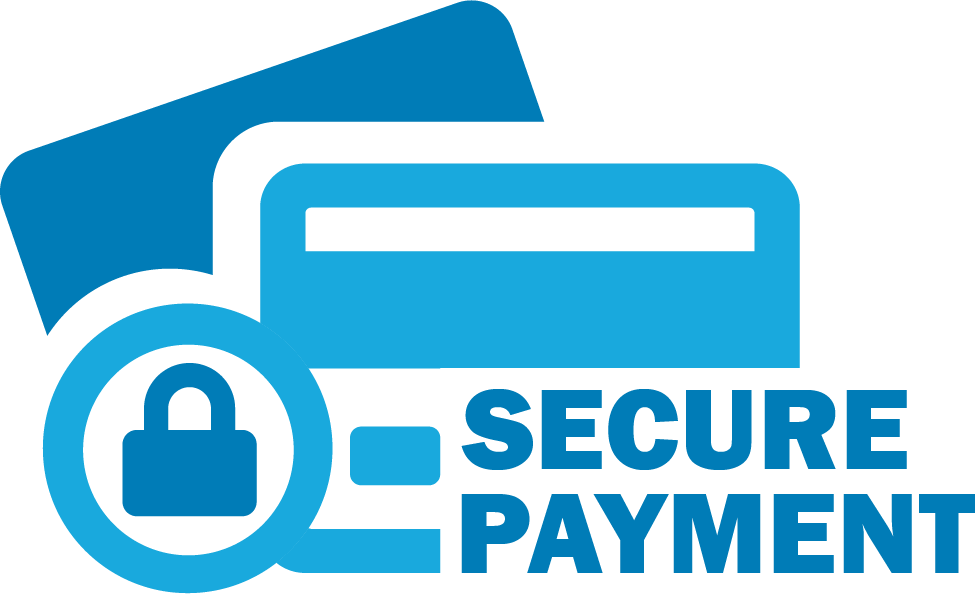

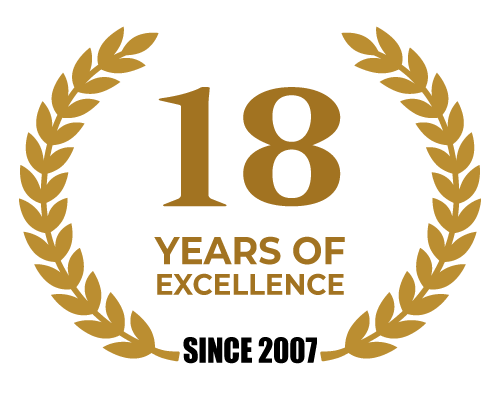 CREATING AUTHENTIC TOURS IN PERU
CREATING AUTHENTIC TOURS IN PERU
One of Peru’s big atracttions, the Colca Canyon is a must on most Peru itineraries. The Colca Canyon offers to travellers the opportunity to get up close and personal to countryside life in Peru, spot soaring Andean condors, bathe in secret thermal baths, uncover jaw-dropping vistas, stay in an oasis.
The Colca Canyon is the world’s second deepest canyon in South America. It’s pretty deep (3,300 metres ), so impressive, and is definitely twice as deep as America’s Grand Canyon. It’s also home to some of Peru’s most captivating scenery, as well as one of the best viewing points for South America’s most famous bird, the condor, which can oft be seen gliding on the thermal winds.
However, those expecting complete isolation in the depths of the canyon will be surprised that small rural communities have endured and persevered here for centuries, and continue to live out a very traditional lifestyle between the arid quarry-like ridges and the surprisingly lush plots close to the river Colca.
If you’re looking for adventure, landscapes, and something a little bit different before to came back your home, then you’ve come to the right place in Peru.
When traveling to the Colca Canyon from Arequipa, you will pass a few small villages, viewpoints overlooking tall volcanoes, and you can sense the proximity of the canyon once you spot the Andean valley and green terraced fields on both sides of a significant depression. No matter how spectacular the ride is, be mentally and physically prepared for a long day ahead.
When setting off for a day trip, it is often easy to overlook a few important information. First of all, you should know that the road leading to Colca Canyon is at altitude, and acclimatization in Arequipa for at least one day is essential.
The Colca Canyon is roughly 3500 above sea level, so it is worth it to arrive well-prepared, although it is almost impossible to know how your body will react even if you follow basic acclimatization steps.
We will pick you up from your hotel between 3:00 a.m. to 3:30 a.m. We will travel approximately 3 hours to Chivay, a small town the capital of the Colca Canyon. Here, we will have our breakfast that includes eggs, breads, butter, jam and juice, seasonal fruits, tea, coca tea and coffee.
After breakfast, we continue driving for 1 more hour to Cruz del Cóndor. During the journey we will make some brief stops to be able to take pictures of the Colca Valley. Arriving at Cruz del Cóndor you will be able to appreciate the depth of the canyon, as well as the spectacular flight of the Andean condors guaranteed at 80 or 90% depending on the season since it is a condor nesting site. After enjoying the impressive views of La Cruz del Cóndor, we return making various stops along the way.
In Antahuilque we can appreciate hundreds of agricultural terraces dating from pre-Inca and Inca times that are still used to grow various Andean grains and other crops, including corn, quinoa and kiwicha. In Maca, we will visit the colonial church and the the locals in their typical dresses Finely embroidered with colored threads. Upon arrival in Chivay, we meet at a local restaurant to eat a typical lunch. After lunch, we will return to Arequipa making stops along the way.
First, we will stop at the Andes viewpoint, located at 4,800 meters on the Patapampa Andes viewpoint pass, the highest point of the trip. Place from where you can appreciate the group of volcanoes in the area. Then, we will stop in the wetlands of the Pampa Cañahuas National Reserve to be able to appreciate vicuñas, alpacas, llamas and more Andean flora and fauna. Returning to Arequipa at approximately 5:30 PM and finishing the service 2 blocks from the main square.
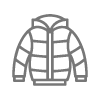 warm jackets
warm jackets
 Hydration bladder
Hydration bladder
 wool socks
wool socks
 camera
camera
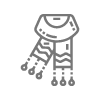 scarf
scarf
 first aid kit
first aid kit
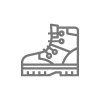 hiking shoes
hiking shoes
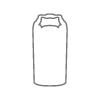 Dry bags
Dry bags
 Trekking Poles
Trekking Poles
 sun cream
sun cream
 Snack
Snack
 sun hat
sun hat
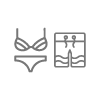 bathing suite
bathing suite
 rain coat
rain coat
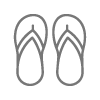 Sandals
Sandals
 insect repellent
insect repellent
 Passport
Passport
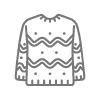 Down Jackets
Down Jackets
 toilet paper
toilet paper
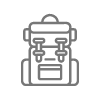 daypack
daypack
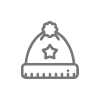 Wool cap
Wool cap
 head lamp
head lamp
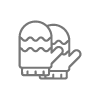 gloves
gloves
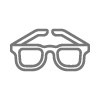 sun glasses
sun glasses
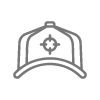 cap
cap
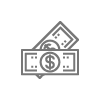 extra cash
extra cash
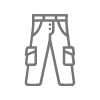 Trekking pants
Trekking pants
The Colca is a south Peruvian canyon considered the second deepest worldwide (around 11,000 feet deep) with an extension of 12,000 square kilometers. Andean landscapes, charming local towns, imposants condors, cozy hot springs at its bottom, and diverse trails that cross it, attract tourists every year. Starting with the most important Colca Canyon facts, we will say that it is located 130 miles northwest of Arequipa, an important south Peruvian city.
Specifically, in the Chivay district, over 2110 m.a.s.l. Therefore, the hikes or tours themselves could be considered quite challenging due to the altitude of certain mountains, hills, and Vulcans located there. Keep in mind that most hikes last two or three days. But added to the phenomenal views, you will have the possibility to see condors and dive into wonderful hot springs, among other amazing activities. Also, as you’ll have to pass, first, by “the white city”, to get to the canyon, it is recommendable to spend some nights and enjoy the many things to do in Arequipa.
Cabanaconde is the main destination for adventure seekers in the Colca Valley, a small town perched on the canyon’s precipice. Here you will find some places to sleep, not very glamorous but clean. Besides, there are numerous places to eat and drink beer. From here, there are three main start points for the hike, depending upon which 2 or 3 day route you’ll be following.
The Incas are commonly given all the credit for the development of highly advanced agricultural techniques in the Andes. But, it seems indisputable that much of this knowledge came from contact with the populations of Colca Canyon, who themselves acquired techniques from long periods of exchange among Andean societies.
Around 600 AD, the Collaguas and Cabanas flourished in Colca. The groups developed agricultural technology such as terraces on the sides of mountains to create land for farming, which in turn led to denser settlements. They also built colcas, stone reservoirs placed at higher elevations, to store grains and tubers in cold and dry conditions – nature’s icebox. These dual developments enabled populations to avoid famine in times of difficulty and became instruments to amass political power.
Over the next three centuries, the Wari civilization spread its influence into the southern Andes and introduced new agricultural technology. Multiple administrative and ritual centers were established to oversee the further centralization of political power. Post-Wari political power appears to have become dispersed again, but the agricultural economy remained intact. Collaguas and Cabanas regained their political independence and maintained relations of trade and exchange.
The arrival of the Incas around 1450 AD once again altered the political landscape. Incan elites intermarried with local rulers and thus gained access to the economic and agricultural realms of the Colca region.
Colca is the name of the canyon, river, and valley in the province of Caylloma 100 mi (160 km) northwest of Arequipa. The Colca region sits atop a major fault that fractured millions of years ago. Over millennia, the continuous flow of the Colca River has carved deep into the volcanic rock and formed Colca Canyon. Intense geothermal activity persists, as evidenced by the many geysers, fumaroles, and hot springs in the region.
The town of Chivay is between the rim and the depths of the canyon. For its geographical location, Chivay has become a transit point for travelers venturing from Arequipa into the canyon, including those who arrange to spend the night at a hotel in Colca Canyon.
From Chivay, continue deeper into Colca to smaller towns like Yanque (5 mi/8 km away) and the famous lookout point for condors (26 mi/42 km away). The village of Cabanaconde, where many treks begin, is 34 mi (55 km) on the opposite side of the canyon from Chivay.
Elevations vary dramatically throughout the Colca region. Chivay (elevation 11,800 ft, or 3,600 m) is the midway point between the valley’s highest and lowest elevations. The road between Arequipa and Colca Canyon goes over the soaring 15,830-ft (4,825-m) Patapampa Pass before dropping down to Chivay and other destinations like Cabanaconde at 10,760 ft (3,280 m).
At its deepest point, Colca Canyon cuts roughly 10,830 ft (3,300 m) into the earth in the Huambo district in Peru’s Caylloma province. This depth makes Colca the world’s second deepest canyon. Nearby Cotahuasi Canyon is only about 700 feet deeper and is the deepest canyon in the world with a maximum depth of 11,560 ft (3,535 m). For reference, Grand Canyon in Arizona, United States is about 6,000 ft (1,830 m) at its deepest point.
The Colca Canyon treks, as its name indicates, are treks developed along the canyon in two or three days. On the other hand, a tour of this canyon can be developed in one day because this visit is not a trek, but a transport tour. In other words, the Colca Canyon tours are typical trips in which transportation picks you up and moves you to the most important canyon zones. You generally never descend to the bottom of the canyon, as the tour passes through towns and attractions near the top of the canyon.
Visiting the Colca Canyon can be done in a few different ways, but the most common are:
The travel agency transportation will pick you up at 03:00 am from your hotel in Arequipa. 4 hours take the trip from Arequipa to Cabanaconde (a town, starting point to do the Colca Canyon tour). Previously, the transport makes a stop in Chivay (a town located before Cabanaconde) to take breakfast (included) and visit the Cruz del Condor lookout to appreciate the majestic condor. Later, once in Cabanaconde, the transport follows a determinate route, visiting the most important points located close to the mountain tops of the canyon. After taking lunch in any of the quaint Colca towns and reposing in some thermal baths of the place, the transportation will pick you up heading to Cabanaconde and after to Arequipa, ending the tour at 5:00 pm Aprox.
Spending at least one night in Colca Canyon is a wonderful way to experience the region at a relaxed pace. This tour is developed with transportation and a bilingual travel guide. The points to visit are similar to the Colca Canyon full-day tour with the difference that you will spend a night in Chivay town or in anyone located close to the canyon border, to continue the visit to Salinas – Aguada National Reserve the next day. This tour is perfect for those tourists who have 2 complete days to visit the canyon and don’t want to do much physical effort. Condor sighting, relaxation in thermal baths, and walks through natural gardens, among other experiences, can be enjoyed on this tour.
Now you’re fully prepared for the trek, it’s time to plan your route. When it comes to choosing your Colca Canyon hiking route, you’ve got a wealth of options. Typically, you can opt to hike one route into the canyon (to one of the three settlements in the oasis at the bottom) and return the same way, or hike a full loop into and then around around the canyon (taking a circuit that heads east or west).
To help you decide, we’ve focused on three routes which differ according to their difficulty, the majesty of their scenery and the terrain they cross. The durations given are how long we would recommend in order for you to hike comfortable and have time to enjoy some relaxation when you arrive at the oasis towns for the evening. And if you’re feeling like you need an extra day of rest before embarking on the steep climb out, you can always extend any one of these routes by including an additional night staying at the oasis.
This tour tries to touch the same points as the Colca tour of three days but in less time. For this reason, the person who chose this option has to be in good physical condition. The two-day hike takes you along the canyon wall for 20 kilometers (12.4 miles). On the first day, you will depart from Cabanaconde at 06:00 am and have a long and pleasant walk, descending to the canyon bottom. The path is not very steep but has parts of loose gravel, so you have to walk carefully. Plus, you’ll constantly be walking in the scorching sun, which can be tiring.
Once at the bottom of the canyon, you will cross the Colca River, where the landscape becomes more vigorous. You will have a scheduled stop in a small nearby town called San Juan de Chuccho for lunch. Then you will continue the walk to Sangalle where you will have dinner and spend the night. In this town, you will surely take advantage of and enjoy the best Colca hot springs. These are ideal for relaxing after a long day of hiking.
On the second day, the hike will start early in the morning with destiny to the top of the Canyon. The path is steep and requires physical effort. You will have some beautiful views available and condor sightings assured. A great possibility to know the Canyon and its beautiful valley before returning to Cabanaconde and finishing the tour.
In the same way, the trek begins at 06:00 am and runs about 30 kilometers (18.6 miles). On the first day, you will arrive early in the town of Chivay where you will enjoy the first stop. You will experience the famous viewpoint “Cruz del Condor” where you can see some Colca Canyon condors. Then the hike will begin descending to the bottom of the canyon.
You will spend the night in San Juan de Chuccho where you will also enjoy the dinner. On the second day, you will continue the walk to some beautiful traditional villages where you will enjoy various activities like participating in traditional dances and planting some typical products among other activities. Then you will descend towards Sangalle where you will stay and have dinner. On your third day, you will have an uphill walk to Cabanaconde where you will have breakfast and then take your transport back to Arequipa. The route is the same as the two-day trek, with the difference that you stay in San Juan de Chuccho and Sangalle. You will have much more time to explore the villages and your surroundings.
Full Day Tour: Best for travelers on a tight schedule. Departs Arequipa at 03:30am and returns at 17:30pm.
2 Day Tour: Best for the less active traveler. Does not include an actual hike into the Canyon, instead stopping at nice viewpoints and traditional viewpoints along the way.
2 Day Trek: Best for the energetic traveler. The climb out is a good 1100m so please bear this in mind (a day’s acclimatization is required upon arrival in Arequipa).
3 Day Trek: Best for those wanting to enjoy the Canyon at a more relaxed pace.
Hotels and hostels in Arequipa will normally store your bags in their safety deposit for free whilst you are away at the Canyon, until you check-in again upon your return. Head off for the trip with just what you need and leave the rest in storage. Especially for the trek as you will need to carry what you take.
You do not need any special equipment with you to be able to tackle the Colca Canyon. A tent is not required. Accommodation in small rustic huts is provided in the ¨Oasis¨ at the bottom of the Canyon. It can get cold at nights and very warm during the day so you need to pack for all weathers and have comfortable footwear (trekking shoes or good trainers are sufficient).
It is very important to know the dangers to which you could be exposed if you venture into little-known terrain such as the Colca Canyon, so it is recommended that you go preferably with a travel agency whose reputation is good and has the high mountain guides qualified for this trekking route.
Even if you go with a good GPS or the best route map, some unforeseen events could occur, such as falling off cliffs, getting lost on the route, falling into the Colca river, or suffering from some illness in the mountains, first of all, a travel agency It provides immediate evacuation because the guides have radios that are connected to the closest surveillance posts.
I know that you could save some money, but the most real thing in this type of hiking routes is to consider your safety as one of the most essential priorities, also going in a group with the travel agency will connect you to meet new friends.
In summary Andean Great Treks does not recommend doing the Colca Canyon trek alone.
Weather for Colca Canyon is typical of the Andes and high elevation destinations in Peru. The region experiences a rainy summer and a dry winter with transitional periods in between.
If you want to enjoy clear days, dry and cold breezes, and firm ground to walk, we recommend you visit the Colca Canyon in the dry season (from April to November). Disadvantage? Well, you will find many adventurers like you (a crowd of tourists) hiking the same routes. On the other hand, If you want to hike the Colca canyon between December to March, you’ll find fewer visitors and more freedom, but more rain, cloudy skies, cold breezes, and the danger of falling off a cliff due to the mud on the ground.
The wet season is from January to March. Cloudy skies are the norm, and downpours are usually brief and episodic. February receives the most rainfall. Average daytime temperatures are about 60°F (16°C) and drop to 45°F (7°C) at night.
The dry season is from May to November. Conditions are generally sunny with a small chance of precipitation. Temperatures during the day are usually around 65°F (18°C) but warmer at midday in direct sunlight. At night, without cloud cover, the temperature can dip down to a chilly 25°F (4°C).
Temperatures vary with elevation. The lowest parts of the canyon can get quite warm in the dry season, especially on hiking trails exposed to direct sunlight. The higher you go, the colder and windier it gets. Mornings and evenings tend to be quite chilly, especially in the dry season.
You can easily find some good water resources in Colca Canyon, but we definitely recommend you to purify the water from any source, bring your own tablets from your country or buy it in Arequipa. Most of the family houses have good fresh water and you can fill your bottles there and use them after been purified. You can also buy in their little shops mineral water, price can be 3 times more expensive, but it is understandable the big effort they spend in bringing water from Cabanaconde. A very good advice is to refuel your water in little villages and not carry so much since you can find in every village a shop. We also recommend you to bring all your plastic bottles back to Cabanaconde.
It is almost 100% that you will see Condors on a Colca Canyon tour. These tours are planned around visiting a famous Condor viewpoint where the Condors visit at the same time every day.
All visitors to Colca Canyon must pay a $ 20 USD entrance fee. You can buy the ticket at any checkpoint. Hold on to the ticket because park officials will ask to see it at various checkpoints.
The weather in the Colca Canyon makes it a little tricky when it comes to what to pack and what to wear. Though the temperature in the oasis stays around 15 C° (59 F°) during the day, it’s pretty hot in Cabanaconde, especially when you hike under the sun. So, wear something you can sweat in, but bring a jacket or an extra layer in case the sun decides to hide behind the cloud.
Always take precautions to prevent misadventures during your hike. It is true that there have been incidents in Colca Canyon, but it is due to the lack of information and recklessness of yourself. There are good resources for information, we will inform you all about it.
Colca Canyon is one of the best spots in South America for close-range observation of condors. Mirador Cruz del Condor is a viewing platform that encapsulates the magic of the high Andes. In front of you, the mountains rise to sky-scraping heights. Below you, the valley floor spills down to vertigo-inducing depths. And above you, Andean condors with 8-foot (2.5-meter) wingspans can be seen (with luck) soaring gracefully on the thermal drifts created in the canyon, drawing gasps from awed onlookers.
Condors play an important role in the folklore and mythology of the Andean regions throughout Latin America. Considered the animal of the spirit world according to the Inca, it is easy to understand why when you see the majestic creatures swooping through the air. Read more about condors in Peru.
Chivay is the tourism hub of Colca and sits on the banks of the Colca River at 11,800 ft (3,600 m). The town is the linking point between the two sides of Colca Canyon and is a watershed in the region’s environmental and ecological economy. Agriculture flourishes below this elevation, while livestock and ranching dominate the upper highland economies.
In Chivay, there are plenty of choices for lodging, a lively market hosted in the plaza, and shops selling high-quality local handicrafts. Just a short walk out of town are the hot springs of La Calera – perfect for a relaxing soak after a day of exploring.
The quaint town of Yanque boasts spectacular views over the river and surrounding volcanoes such as Sabancaya and Mismi (whose glacier is the source of the Amazon River). In the morning, the central plaza serves as a stage for local schoolchildren to perform folkloric dances for tourists.
Also on the plaza, Immaculate Conception Church is considered to be the most architecturally beautiful of the valley’s churches. First built in 1560, destroyed in an earthquake 100 years later, and rebuilt again in the late 17th century, the church displays a baroque mestizo style with a carved bas relief portal entrance.
On the road out of town, you’ll see a magnificent example of pre-Columbian terracing at Llaqta Cucho whose name means amphitheater.
Whether you’re spending the night in Chivay or have just completed a trek, consider relaxing in one of the numerous hot springs and geysers throughout Colca Canyon. Locals believe the pools have curative properties, especially for rheumatism and arthritis.
La Calera hot springs are 2 mi (3.5 km) from Chivay. Choose from indoor and outdoor pools of differing temperatures with views to the mountain landscape. Calera can sometimes have a bit of a festive atmosphere in the afternoons, so go early for a more tranquil experience.
Chacapi hot springs are 1 mi (1.5 km) from the plaza in Yanque and a pleasant setting for a reinvigorating soak in thermal waters after a day of exploring. The water temperature at the pools can reach up to 122°F (50°C).
Guests at Colca Lodge have unlimited access to the hotel’s amazing thermal pools.
Direct your eyes to the glittering nighttime sky over Colca Canyon. In Chivay, Casa Andina Standard has a small planetarium and observatory with nightly tours offered in English and Spanish. Clouds obstruct the constellations during the rainy season in Colca, so the planetarium is generally closed between January and March. Learn about Inca astronomy and the southern night sky.
Cabanaconde is the closest town to Mirador Cruz del Condor, and the starting point for Colca Canyon treks to Sangalle. The town is great for travelers in search of day hikes as there are outstanding lookout points within easy walking distance. From the trail viewpoints of Cejana, San Miguel, and Achachiwa, you can peer down at villages tucked into the valley bottom. The sight of hulking mountains across the canyon is truly humbling. You might even see a condor or two swooping past.
From Cabanaconde, it’s just a two- to three-hour walk down a zigzagging path to the small oasis town of Sangalle. Along the way, there are impressive views of the valley landscape. Down in Sangalle, a handful of lodges receive trekkers. Amenities are basic, but you’ll have all you need for a relaxing stay in this truly magnificent setting.
If you’re staying in Yanque, make the short side trip to Uyo Uyo, a ruined pre-Inca village built of stone blocks held together with clay mortar. The site was first occupied by the Collagua group in the 1300s and later by the Inca civilization. The ruins you’ll see are the result of extensive restoration work over three years. You can undertake the two- to three- hour loop trail from town, finishing with a refreshing dip in the Chacapi hot springs.
Learn about Colca and its diverse communities on a visit to Museo de Yanque. Three exhibition rooms display scale models of colonial-era Colca churches, as well as ceramics, textiles, skulls, maps, paintings, and dioramas depicting pre-Columbian life. An additional room depicts contemporary life in the Colca Valley, from plants and animals to agriculture, religion, and typical dress. The museum also offers textile workshops and a program of cultural activities throughout the year.
Accommodations in Colca are close to Chivay, Yanque, and Cabanaconde. Enjoy a good night’s rest in the shadows of glacier-capped peaks and a tranquil day away from the crowds. Browse our preferred selection of Colca Canyon hotels, from the luxurious Aranwa Colca to budget-friendly options such as Casa Andina Colca and La Casa de Mami Yacchi.
Consider customizing your travel itinerary with an overnight stay at Colca Lodge near Chivay, home to arguably the most incredible hot springs in all of Peru. Guests have exclusive access to the lodge’s private thermal pools overlooking the river and can top off their rejuvenating afternoon with a massage at the on-site Spa Eco Thermal.
Your start and end-point for the trek – most multi day hikers won’t spend a night here but it isn’t a bad idea if you have time and don’t want to rush to/from Arequipa.
A small hamlet at the bottom of the canyon where you will either spend your first or last night if it’s on your route. It has several options spread out over a distance of 5-10 minutes – depending on your route and how tired you are, you may just end up at the first one you stumble towards.
Without doubt the most popular place to spend a night in the Colca Canyon due to its uniqueness and relative ease of access from Cabanaconde for daytrippers or one-night non-hiking visits. Booking ahead is absolutely essential in high season.
The simple rooms have bedspreads and walls decorated in bright colours. All of them have a private or shared bathroom and offer views of the mountains and the garden. In addition, towels and bed linen are provided. Electricity is available only between 18:00 and 21:00.
In the surroundings of Oasis Paraiso Ecolodge you can go hiking and explore the Colca Canyon and River. In addition, the establishment houses a restaurant, a games room and a reception with a tourist information service.
There is nothing in Llahuar except two places to stay and the thermal pools: you’ll spend your first night here or, if you’re taking our hardcore route, your last night.
Yanque Peru is an authentic village that is almost 20 miles before the main tourist entrance gate of the increasingly popular Colca Canyon. There are many awesome and adventurous things to do in Yanque and the surrounding villages that remain hidden gems. Sadly, many tourists skip this under-appreciated region and village.
Rooms are furnished with a desk, bedding, and a patio with garden views. Rooms at Le Foyer Colca have free Wi-Fi and a private bathroom with a shower and free toiletries. All rooms include a seating area. Le Foyer Colca offers a à la carte or American breakfast.
Colca Lodge Spa & Hot Springs offers horseback riding through the Colca Valley and large sun loungers in the garden. It also has a basic satellite internet connection service at the reception.The rooms offer a cozy atmosphere and feature parquet floors, rugs, stenciled walls and decorated wood paneling. Some have private access to the hot springs and include a fireplace and a minibar.
A buffet breakfast is served daily, including regional jams and tropical fruits. The main restaurant is decorated with rustic walls and decorations. The Puye restaurant offers Alpandina cuisine and the barbecue bar serves typical Peruvian specialties next to the Colca River.
The construction of the hotel blends perfectly with the wild environment while offering the most modern comforts. In addition, it enjoys a strategic location for excursions by bicycle, horseback, on foot or by canoe, as well as for fishing.
Hotel Killawasi offers many adventure and ecological activities in the area. Guests can go horseback riding, hiking, visit the natural springs and spot condors in one of the deepest canyons in the world. They can also learn more about local Inca history and agriculture. A buffet breakfast is served in the restaurant. In the evening, you can taste various dishes made with fresh ingredients from the region. At the bar, drinks and snacks can be ordered during the day.
All rooms at Tradicion Colca are surrounded by wild nature and offer views of the mountains. They have a private bathroom, hot water and heating. The sauna and massage sessions are available at an extra cost. Guests can relax reading a book from the library. The property offers a bicycle rental service and table tennis.
The hotel has a private barn located nearby. Guests can organize horseback riding excursions to the main archaeological sites. The property has a 45 cm Dobsonian telescope for stargazing and offers access to the planetarium and the astronomical observation center at an additional cost.
Rooms are decorated with colorful local fabrics and upholstery, and feature heating, a desk, and a private bathroom with hot water. In addition, room service is offered. The property serves a continental breakfast and Peruvian specialties such as the popular ceviche, which consists of marinated fish served with sweet potatoes and corn.
Miskiwasi Bed & Breakfast organizes excursions to places of interest in the area, such as the Cruz del Cóndor, located 35 km away. It also offers bicycle rental, transfer and currency exchange services. Chivay is 8 km away and Arequipa is 160 km away. Free private parking is available nearby.
All rooms have patios with garden views. The rooms are equipped with a private bathroom with a shower and free toiletries. Some include a kitchen. Casa de la Abuela Isabel serves a buffet breakfast every morning. There is also a solarium. Casa de la Abuela Isabel offers a car and bicycle rental service. The area is ideal for cycling and fishing.
All villas at Las Casitas, A Belmond Hotel, Colca Canyon are designed with care. All have a private terrace with a heated Marbel pool and views of the canyon and gardens. In addition, they have a spacious bathroom, 3 showers and a glass ceiling.
They are equipped with a minibar and an iPod dock. The sofa is located in front of the cozy fireplace. At Las Casitas, A Belmond Hotel, Colca Canyon, guests will find ingredients from the orchard and organic tree orchards. There are also stables, children’s play areas, trout ponds for fishing and regional animals such as alpacas and llamas, like the spacious garden.
Wellness facilities include a sauna and various massage treatments. Guests can enjoy a wide variety of outdoor activities, such as giant condor watching, horseback riding, hiking or visiting a local alpaca farm. The property has a gazebo with views of the valley and a chapel. Las Casitas restaurant offers magnificent views. The dishes are prepared with tasty regional ingredients. The bar is open throughout the day and serves refreshments and drinks. There is room service.
Coporaque is a picturesque little town where you can walk to the ruins of Uyo Uyo. The travelers who arrive can do experiential tourism. The snow-capped mountains and the colors of the sunset are fabulous. The town has its square next to it is the Chapel of San Sebastián, the Temple of Santiago Apóstol, centuries-old witnesses of the faith of these towns of Arequipa, and its rustic streets stopped in the color of a watercolor.
The pre-Inca terraces and irrigation system still in operation demonstrate the agricultural progress achieved by the Collagua ethnic group, native to this part of the southern Andes. And apparently the word Coporaque would come from the Quechua words “quoto”, “pile of corn” and “raque” which means “place where it is distributed”; the joined words would mean “place where the corn is distributed”.
Aranwa Pueblito Encantado del Colcan offers air-conditioned rooms with elegant chandeliers and dark wood furniture. Some also have a balcony and a minibar, and the suite has a kitchenette. The property also has a chalet.
At Aranwa Pueblito Encantado del Colcan there is a shared garden. It also houses a restaurant serving local food. In addition, there is room service. Aranwa Pueblito Encantado del Colcan is located 10 minutes’ drive from the town of Chivay. Rodríguez Ballon International Airport is a 3-hour drive away.
Lodge El Portal de Qopuy offers a buffet or à la carte breakfast. The accommodation has a garden and a terrace.
All units are equipped with air conditioning, a shared bathroom and a kitchen with a fridge, oven and stove. Bed linen and towels are provided at the property for an additional fee. A continental breakfast is served at the property.
Yuraq Qaqa Experiential House features a hot tub. In the surroundings you can go cycling and fishing. The property offers a bicycle rental service.
The accommodation has a dining area and a kitchen with a dishwasher, fridge and stove.The country house offers a continental or American breakfast. Casa Vivencial Rumi Wasi has a terrace. Nearby you can go cycling and fishing.
The private bathroom is fully equipped with a shower and free toiletries. The country house offers an American breakfast. Ayni Wasi has a terrace. Guests can go hiking and cycling nearby, or enjoy the garden.
El pueblo de Chivay es la capital de la provincia de Caylloma en el departamento de Arequipa. Su fama reside en estar localizado en la parte alta del cañón del Colca, el segundo atractivo turístico más visitado del Perú (después de Machu Picchu).
Chivay es la puerta de ingreso al cañón del Colca. Está a 163 kilómetros por carretera desde la ciudad de Arequipa. Sus calles, plazas e iglesias tienen las típicas características de un pueblo serrano de vida apacible y muchas tradiciones. Entre los principales atractivos turísticos destacan los baños termales de La Calera, el planetario de Colca, su iglesia colonial, así como las rutas que conducen al cañón del Colca. Puede visitar este poblado por propia cuenta o dentro de un tour todo incluido.
El nombre ‘Chivay’ proviene de la palabra quechua ‘Chuay’ que quiere decir ‘Plato de barro’ y guarda relación con la forma hondonada del poblado. Sus orígenes se remontan a épocas anteriores a los incas. Allí habitaron los collawas y los cabanas, herederos y forjadores de las culturas Wari y Tiahuanaco. Posteriormente estos pobladores se unirían al imperio inca.
The rooms are decorated with rustic walls in delicate pale olive tones and have views of the valley and the river. All rooms have a small balcony or terrace with splendid views. All rooms have a modern private bathroom. A full American breakfast is served at the restaurant, which features panoramic windows overlooking the valley and serves local specialities. There is also a small central cast iron fireplace.
Casa Andina Standard Colca has a terrace with a fountain and a cozy lounge with a fireplace. Due to the altitude, the hotel reception provides oxygen on request. The accommodations have simple, rustic décor and include a desk and a radiator. Guests can enjoy Chivay’s natural hot spring pools or take a guided tour of the Colca Canyon.
Sonqo Killa del Colca serves an American breakfast every morning.In the immediate vicinity there are several places of interest, such as the Chivay Arena stadium, the bus station and the main square. The nearest airport is Rodríguez Ballón International Airport, 143 km from Sonqo Killa del Colca.
A buffet breakfast is served daily and the on-site restaurant serves regional specialities. El Pozo del Cielo is located 300 meters from the archaeological ruins. The bus terminal is 1 km away.
La Vita Hoteles Colca has 30 comfortable rooms with carpeted floors, private bathroom with unlimited hot water, feather duvets and heating. The property has a 24-hour reception. La Vita Hoteles Colca is 100 meters from Nuestra Señora de la Asunción Church, 400 meters from Chivay Arena and a 3-hour drive from Arequipa.
Overall, the Colca Canyon trek is challenging, whichever path you choose. Even though the hike down may be easy, you still need to hike your way out of the canyon and, with Sangalle sitting at 2,100 metres of elevation and Cabanaconde at 3,300 metres, you’re facing the effects of altitude, too.
Another thing to consider is that it’s a high desert region where the sun is pretty intense, and there are not many trees to offer shade. Moreover, the paths are mostly dusty with small, loose rocks, which is physically demanding.
You don’t need to be super fit to do the Colca Canyon hike. But it’s definitely not for a first-timer or anyone with mobility issues. Since there’s no place to spend the nights other than in Cabanaconde or in the villages within the canyon, once you start your hike, there’s no stopping. So, good cardio, strong legs, and a sense of determination are a must.
Andean Great Treks does not operate the Colca Tours and Treks. The tour providers allow changes up to 17:00pm the day before at no cost. Cancellations or missed tours will be charged the full fee.
Andean Great Treks does not operate the Colca Tours and Treks. The operators will charge us fully for any NO SHOW or missed departure not previously cancelled before 17:00pm the day before. If you would like to book the tour/trek again for the next day, then this is possible but you will have to pay a second time.
Altitude sickness can catch many travellers a little bit off guard. Not everyone gets sick in high altitudes and it is difficult to predict who is likely to be badly affected by it. For most people, it is nothing more than a headache and some dizzy sensations that diminishes over a short period of time. 1 to 2 days for most people. If you want to limit your chances of getting sick though, there are a few things you can do:
The answer is very simple, peace of mind. Any number of things can go wrong when you are on holidays overseas and yet it’s always a surprise when they do an expensive one. To avoid the headaches that come with illness, delays, lost luggage, itinerary changes or cancellations, it pays to plan ahead. Otherwise, you could be stuck paying for hotels or tours you can’t enjoy, or find yourself crowdfunding to pay for enormous medical or repatriation bills.
Travel insurance does not only cover medical issues, depending on your plan, it can also include baggage loss, trip cancellations, stolen credit cards and passports, and even repatriation.
Yes, this is possible! And it is the most recommended itinerary to save time, because you do not have to return to Arequipa city.
If you are traveling alone: The Buses depart from Chivay plaza every day between 12 to 13:30 PM (approximately). It is recommended that you buy your bus ticket one day in advance. You must be at the bus station at least 40 minutes before Bus departure.
In our organized Colca canyon excursions: In our Colca Tours the last day (Second day or Third day depending on your type of tour) you will return to Chivay town about 12:00 PM where you will have time for your lunch before taking the Transport and keep driving to Puno city (With stops on the route for pictures).
This transfer to Puno could be organized also with a Tourist Bus Company that offers this service. The coordination and logistic will be in our hands, so you don’t need to be worry and only relax and enjoy the tour!
You will be arriving in Puno about 7:00 PM (19:00hrs) and the drop off will be in your hotel (If it is located in city center), if your hotel is located outside of city center an extra charge can be added for transfer to your hotel.
YES! This service is possible in our Colca Canyon exclusive private tours!
But in case you want to join a Group tour to Colca canyon and you are in Puno city; we can manage this provinding you with a transfer or Bus ticket from Puno to Chivay town; where you can join the Group Tour and keep the tour program until Arequipa city.
The transport or Bus will pick you up from your hotel between 6:00 to 6:15 am arriving at Chivay town approximately at noon, where you will join our Colca canyon Classic Tours and keep the program according to the itinerary.
The excursions will end in Arequipa city in your hotel.
Want an in-depth insight into this trip? Essential Trip Information provides everything you need to know about this adventure and more.
View Essential Trip InformationThe best time to visit Peru is during the dry season, between May and November, when the weather is dry and bright, with more frequent rainfall occurring between November and April.
To book this tour, a minimum of $ 75 USD per person is required, the remaining balance will be paid upon arrival in Peru, at the Cusco office.
Any other additional information, please coordinate with your travel agent.



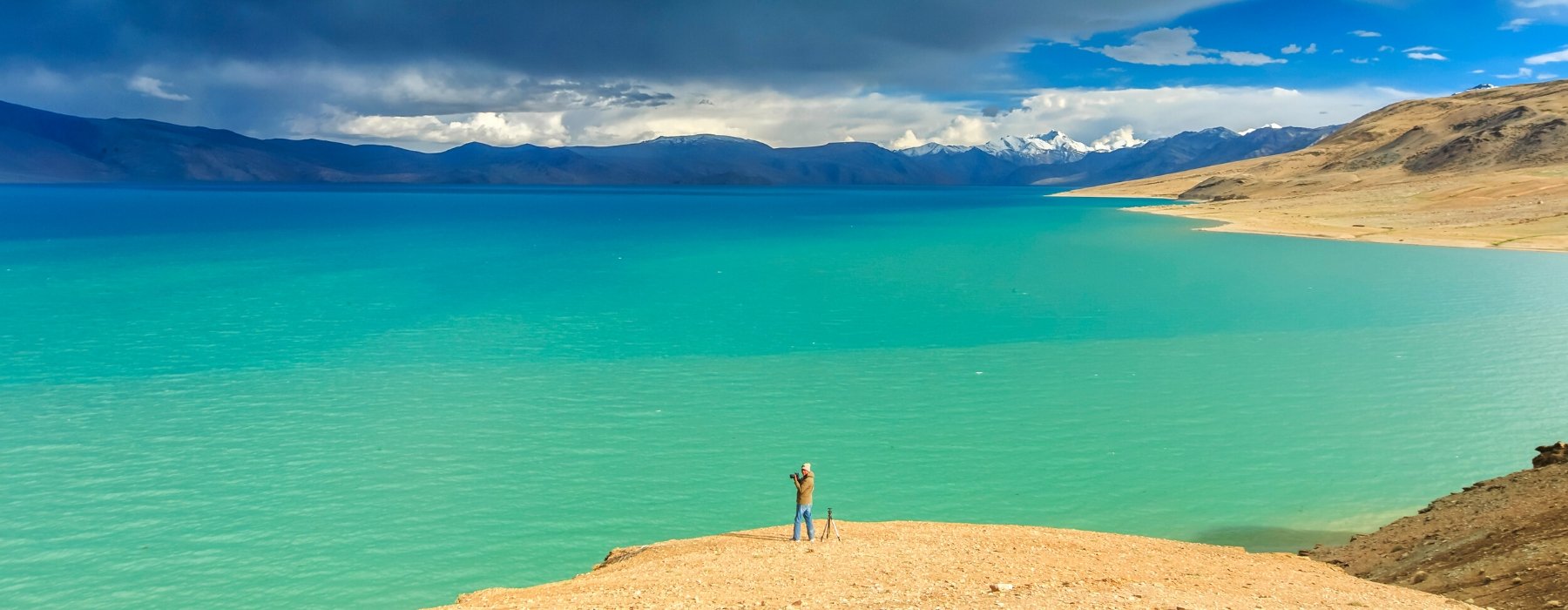
You’ll get up close and personal with the destinations and communities you travel through, seeing the cultural and historical highlights, natural wonders and wildlife, and local hidden gems.
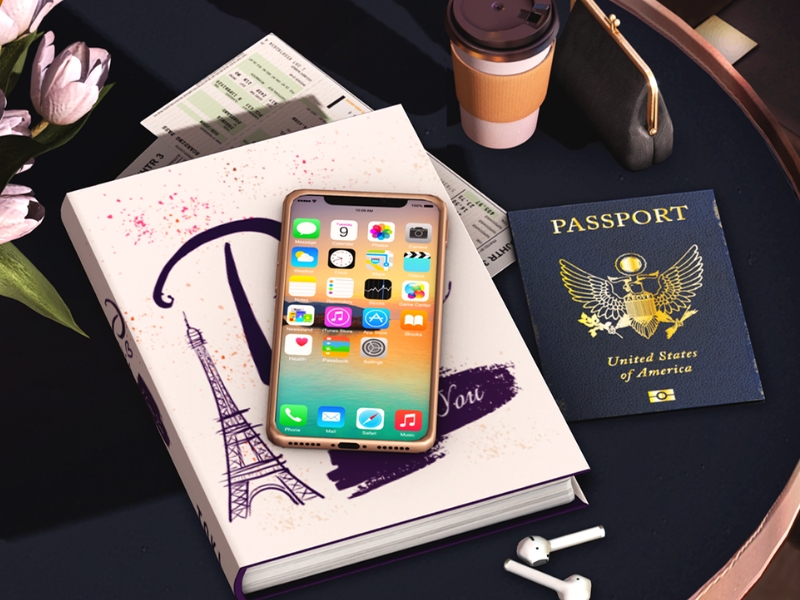
Peru is a country of basically free access. Most of the countries of America and Western Europe do not require a tourist visa to enter Peru, and the maximum length of stay granted by the authorities is 183 days (it cannot be extended). For a stay for a longer period with other objectives (business, study, work, etc.) it is necessary to previously request the corresponding visa from the Peruvian consulates.
To enter Peru it is an essential requirement to present a valid passport with a minimum validity of six months from your entry into the national territory. Citizens of Argentina, Brazil, Paraguay, Uruguay, Ecuador, Colombia, Bolivia and Chile can enter with their national identification document.

Traveling is one of life’s great pleasures and what most of us dream to do at one time or another in our lives. Discovering new cultures and visiting ancient ruins is what motivates us to travel. Peru has a rich and colorful history with many different regions to explore. While thinking of your Peruvian holiday you might want to also consider a group or individual tours in Peru. Both options are viable when traveling in Peru if you prefer the company of other people when you travel then a group tour will be for you. You’ll always have someone to keep you company along the route, but you don’t always have to walk together. Wherever possible your Andean Great Treks leader will allow everyone to walk at their own pace, regrouping regularly along the route.
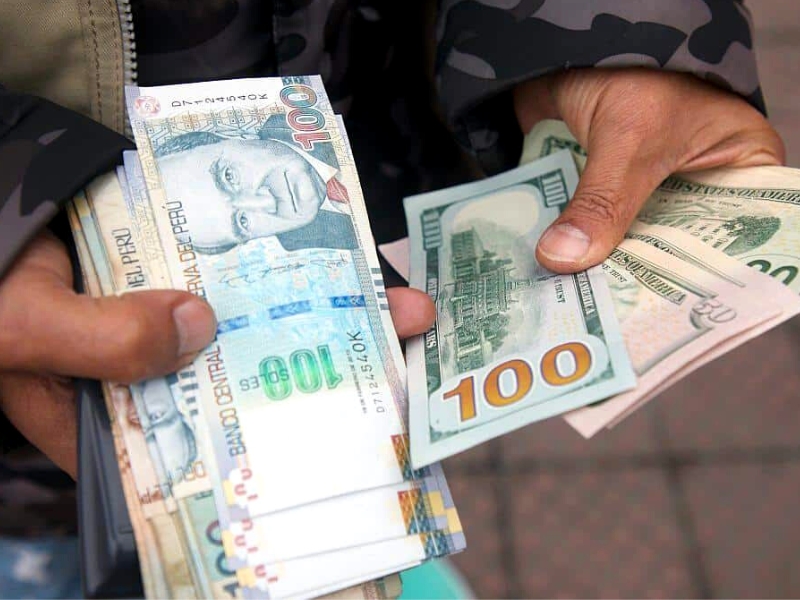
The currency in Peru is the Sol. It doesn’t take long to get used to it. There are just over three Soles to the US Dollar (USD), around three and a half Soles to a Euro (EUR) and just over four Soles to the Pound (GBP). Rounding up helps you make quick conversions when deliberating prices and making payment. While some businesses accept US dollars and some ATMs allow you to withdraw it even, it is much easier to pay for day-to-day things with Soles including food and drink, shopping at local markets and entry to local attractions. There are ATMs in every major city in Peru and as a point of reference can also be found near each city’s Plaza de Armas (the main square). It’s highly unlikely that you will find any ATM in more rural areas including villages and small towns. The fee for withdrawing money at the Peru ATM is around $5-$7 per transaction. The maximum withdrawal is around $200 – $250 per transaction.
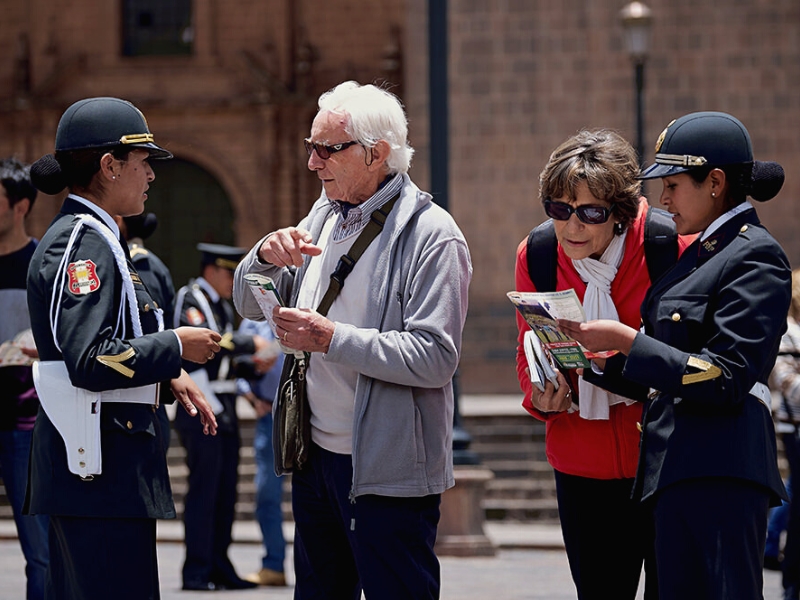
Like many other countries in developing destinations, the region’s beauty and uniqueness are countered by inequality and lack of investment. This has led to crime rates (mainly theft and scams) not being uncommon in the larger cities. We know this doesn’t sound very attractive, but it’s important to mention it regardless. Most experienced and well-traveled visitors will understand this well and not be too concerned. However, having said this, it is our duty to take care of you during your visit. That’s why we present you here with a few recommendations to be extra safe. Avoid walking alone at night on empty streets. Don’t flaunt valuables! If going for a walk or going on public transport, be sensible and avoid showing off expensive items such as expensive watches and jewelry. Be careful of pickpockets! Don’t leave your bags anywhere that doesn’t look safe, and make sure to take them with you.
Most people can start to feel the effects of altitude at over 2000 m (6561 ft) regardless of age, gender or fitness level. While our leaders have basic first aid training and are aware of the closest medical facilities, it is very important that you make yourself aware of the cause and effects of travelling at altitude, monitor your health and seek assistance accordingly. It’s important to take it easy, drink plenty of water and speak to your group leader at once if you feel unwell.
We recommend seeing your doctor if you have any health concerns before undertaking the trip. Particularly if you have a pre-existing medical condition or take any medication.
Absolutely. All passengers travelling with Andean Great Treks are required to purchase travel insurance before the start of your trip. Your travel insurance details will be recorded by your tour guide on the first day of the trip.
Travel insurance is compulsory on all our trips for those travelling internationally. We require that at a minimum you are covered for medical expenses including emergency repatriation. If you are travelling within your home country or region please confirm before travel that you are entitled to access the public medical system easily should an accident occur. We strongly recommend all travellers have a policy that also covers COVID-19, personal liability, cancellation, curtailment and loss of luggage or personal effects.
No vaccines are required in order to enter Peru but some are recommended for protection against disease. Visit your doctor or travel clinic for advice and make sure to schedule vaccinations 4-6 weeks before your departure date, as some require time to become effective.
Recommended travel vaccines for Peru
Drinking tap water isn’t recommended in Peru. For environmental reasons, try to avoid buying bottled water. Fill a reusable water bottle or canteen with filtered water. Ask your tour guide or the hotel where you’re staying where filtered water can be found. It’s advisable to avoid ice in drinks and peel fruit and vegetables before eating. There’s no need to worry about keeping your mouth closed while you shower, but if you have a particularly sensitive stomach, you may wish to use boiled or filtered water to brush your teeth or wash fruits and vegetables.
When ordering cocktails or smoothies, try to avoid drinks with ice. You can always ask the waiter or vendor if they use filtered water to make ice, but if you’d rather not risk it, just order your drinks ‘without ice’. Single-use water bottles contribute to a huge environmental problem, so your best bet is to bring a portable water filter or water purifying tablets, and a large reusable bottle to refill at canteens or hotels. Brands like Steripen sterilize water using UV, while bottles from Sawyer remove most bacteria through an in-built foam purifier.
Water safety tips for Peru
Here are some handy tips to follow when it comes to drinking water in Peru:
Most hotels, large retailers and tourist attractions accept credit cards but will usually charge a fee (about 5% to 7%) for using them. Make sure you carry cash for when you’re dealing with small vendors, family-run restaurants and market vendors.
There are many situations where you might want to use your mobile when travelling. It could be to call a hostel to book a room, arrange a meeting point for breakfast with your new travel friends, or contact loved ones in an emergency.
Mobile phone coverage is generally good in Peru’s cities, but may not be available in more remote and mountainous areas. You will be able to use your mobile/cell phone while in Peru, but only if you have activated global roaming or purchased a local SIM card. If you choose to activate global roaming, don’t forget to check with your provider as to what costs will be incurred to avoid any unwanted surprises when you get your phone bill – it’s often painfully expensive! You should also make sure you check that your phone is unlocked before leaving home or the local SIM may not work overseas.
Buying a local SIM in Peru
Many travellers prefer to buy a local SIM card instead of a roaming plan as it works out much cheaper. You can buy a SIM card at most airports and phone retail shops in the bigger towns and cities. There are several carriers to choose from in Peru, with both prepaid and postpaid options available. Though postpaid is slightly cheaper, it may require a minimum commitment period, so you might be better off going with the prepaid option. As far as carriers go, Movistar, Entel and Claro are some of the biggest and will offer you decent coverage, though it may be poor or cut off completely in more rural or mountainous areas like the Andes.
Peru has a mix of both squat toilets and western-style flushable toilets. It’s a good idea to carry your own toilet paper and hand sanitizer, as they are not always provided. Some public toilets charge a small usage fee. Expect to use squat toilets if travelling on the Inca Trail.
ATMs can be found in most of Peru’s major cities and tourist areas. ATMs are far less common in rural areas and small villages so have enough cash to cover purchases when travelling away from the larger cities.
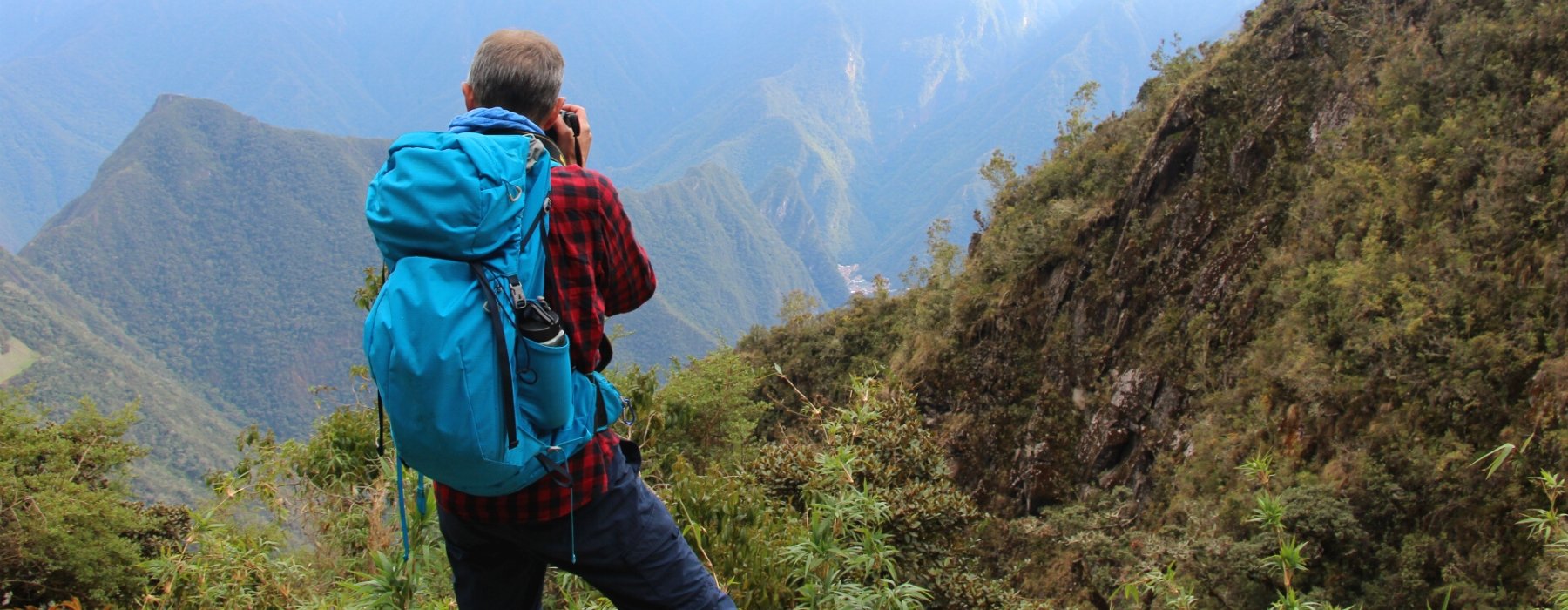
Every Andean Great Treks holiday has been thoughtfully planned and crafted by our specialists. They draw on their own extensive travel experience and the guidance and expertise of our local partners to create superb holidays. Our specialists are committed to making every aspect smooth and enjoyable; they genuinely want to ensure that the holidays they create leave you with wonderful lasting memories.
Every Andean Great Treks traveller is accompanied by an experienced tour guide, you will be immersed in Historic cities, ancient ruins and unfamiliar landscapes are all brought to life by our carefully selected local guides. They want to share their expertise and help you make your own discoveries too; their sole mission is to ensure you enjoy every moment.
Giving you the freedom to make your holiday even more memorable. We know how much our customers look forward to their holiday and we pride ourselves on the choice and flexibility that we offer to enhance every aspect of your experience. Whether it’s getting to the airport, upgrading your room or booking an additional excursion, we can help.
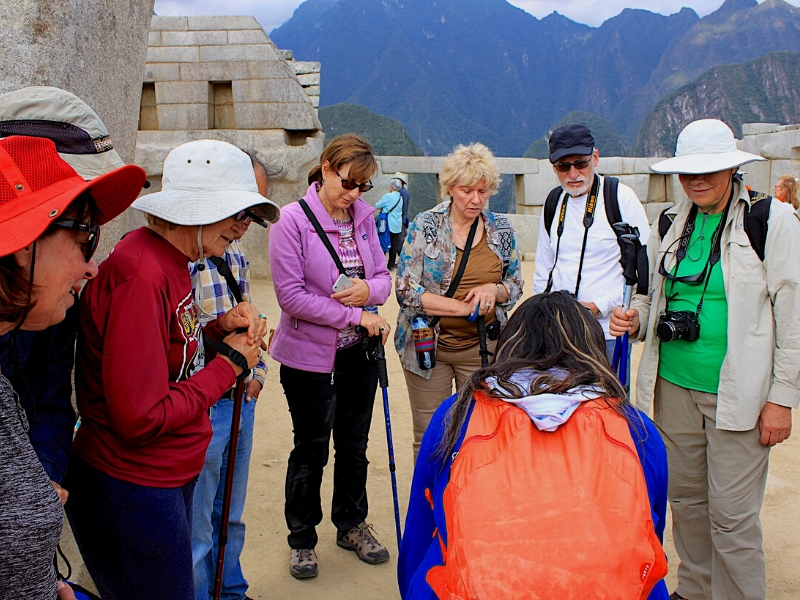
Our guides are the stars of the show; it is their unrivalled knowledge, passion and expertise that will transform your tour experience from good to truly extraordinary!
Because the have grown up in the area and know it like the back of their hand, so they can help you experience whichever aspects most interest you. They’re passionate about sharing their corner of the world with you, and as you explore together, they’ll open your eyes to the intricate details, provide background to enhance your understanding of what you’re seeing, and share stories that will bring everything to life.

“Your inspiration for a trip can be a single word or a highly evolved outline, but it’s the conversations we have that help us understand the experience you’re looking for. Meanwhile, I’m looking back on the time I spent at the destination.
‘The great thing about working with a specialist at Andean Great Treks is how they take your complete jumble of ideas and turn them into something absolutely spectacular.’
As you begin to share your ideas with your specialist, it will connect them immediately back to a time in their own travels. Conjuring a picture of the rest time they made that same discovery, reminding them how it felt.
Your specialist understands that, when the journey is right, it has the power to excite your emotions in the most profound ways after all, that was the effect on them.
They carry a treasure box of moments, captured over many journeys, into every suggestion they’ll share with you, as they ask you how you want to feel on your trip.

EXPERIENCES THAT CALL TO YOU
It’s what you do in a destination that helps bring it to life. It’s why we strive to choose experiences that help you connect to a place, absorbing a little of its complex character. Wherever your passions lie, we’ll recommend experiences that speak to you, and we’ll recommend the guide or local expert who’s most qualified to help you explore. Packing your holiday full of special experiences means some early starts and long days, but you can be sure that you’ll return home with many incredible memories! Read our Tours and check the Physical Ratings to see if the pace and activity levels are right for you.

STAYS WITH DIFFERENCE
We know that where you stay is a cherished part of your travels. So, we go to great lengths to find places to stay that exceed expectations, or go above and beyond the ordinary, whether in their character, hospitality, or location. Over the years, we’ve discovered the very best properties, trying and testing them, so we can choose the right one for you. We’ve nourished long-standing relationships with these establishments and the people who founded them, and we’ve stayed there many times often, we’ll even know which rooms have the best views (and reserve them for you).

Our style of travel — authentic, thoughtful, and focused on building meaningful connections to the people and places you visit — is inherently respectful and considerate of the destinations we love. We design each aspect of your trip exactly as you want it, which includes its sustainability. That might mean choosing a train journey instead of a flight, staying at eco-friendly wildlife lodges, or opting for experiences that give back to the communities you’re visiting. The choice is yours.
Responsible travel has always been at the heart of what we do. First and foremost, because it gives you the best experience, but, also because it helps to preserve the communities and landscapes you visit. This isn’t new for us we collaborated with local communities and outside experts so we can grow to be better ambassadors.
The most authentic and interesting experiences often directly benefit the local people. We prefer to buy local products that are produced in the organic farms of the Sacred Valley, we also have alliances with local artisan organizations who provide us with souvenir items for our clients, your money directly benefits the local economy.
Our style of travel — authentic, thoughtful, and focused on building meaningful connections to the people and places you visit — is inherently respectful and considerate of the destinations we love. We design each aspect of your trip exactly as you want it, which includes its sustainability. That might mean choosing a train journey instead of a flight, staying at eco-friendly wildlife lodges, or opting for experiences that give back to the communities you’re visiting. The choice is yours.
Responsible travel has always been at the heart of what we do. First and foremost, because it gives you the best experience, but, also because it helps to preserve the communities and landscapes you visit. This isn’t new for us we collaborated with local communities and outside experts so we can grow to be better ambassadors.
The most authentic and interesting experiences often directly benefit the local people. We prefer to buy local products that are produced in the organic farms of the Sacred Valley, we also have alliances with local artisan organizations who provide us with souvenir items for our clients, your money directly benefits the local economy.
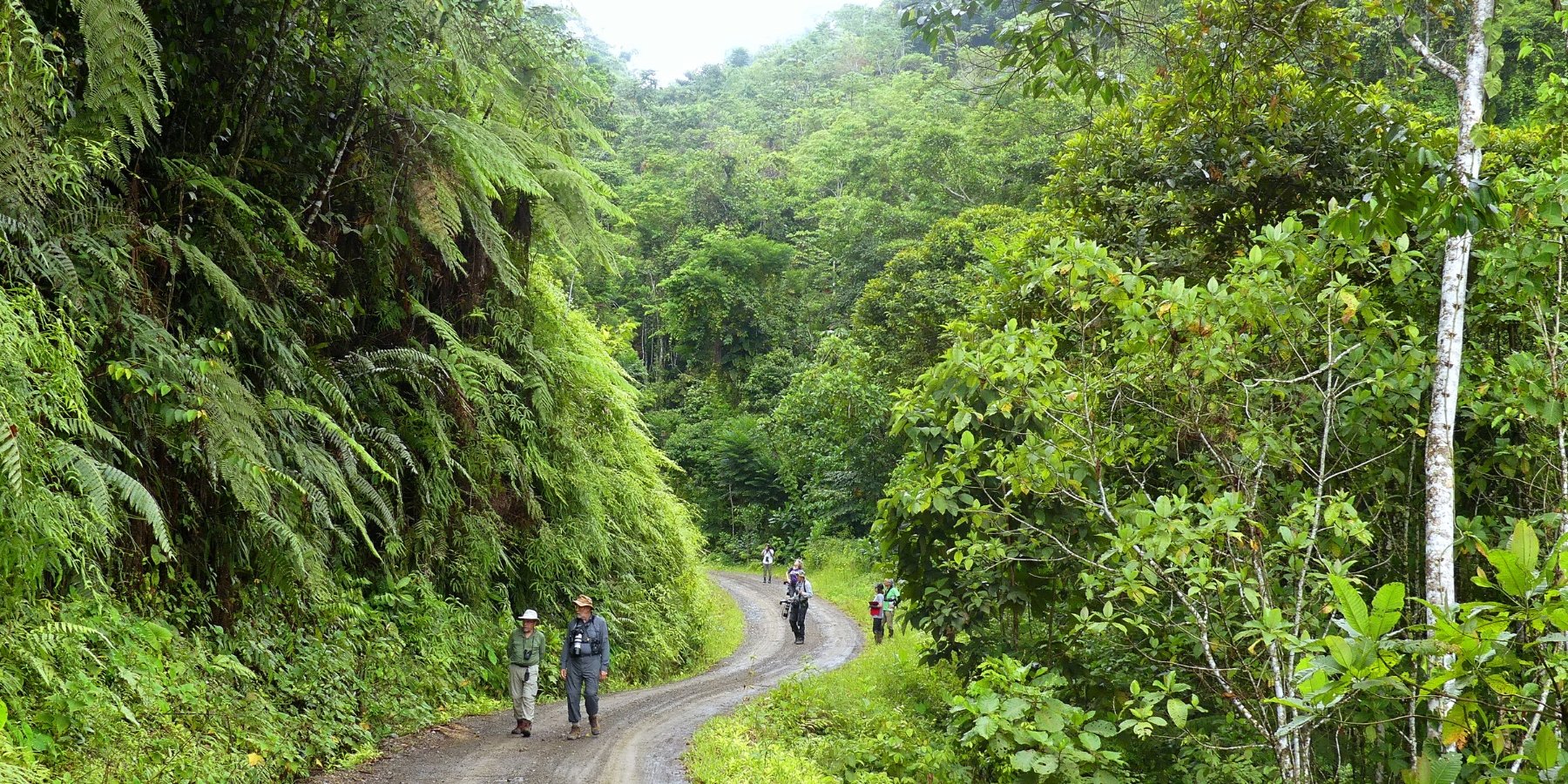
‘There’s a saying: we don’t inherit the Earth from our ancestors, we borrow it from our children. When we show you our country, this philosophy guides everything we do. It’s our responsibility to preserve the environment and wildlife, and support communities. That means using slower modes of transport, like cycling, employing local people, and working with communities who’ll benefit directly from your visit. This also gives you the best, most authentic impression of the places we want to share with you.
We prefer to buy local products in ecological bags, to avoid the use of plastic bags, likewise we teach the use of soaps and ecological products in each tour that we organize. We also work on reforestation projects with local communities who take care of landscape resources such as communal reserves, national parks.
‘There’s a saying: we don’t inherit the Earth from our ancestors, we borrow it from our children. When we show you our country, this philosophy guides everything we do. It’s our responsibility to preserve the environment and wildlife, and support communities. That means using slower modes of transport, like cycling, employing local people, and working with communities who’ll benefit directly from your visit. This also gives you the best, most authentic impression of the places we want to share with you.
We prefer to buy local products in ecological bags, to avoid the use of plastic bags, likewise we teach the use of soaps and ecological products in each tour that we organize. We also work on reforestation projects with local communities who take care of landscape resources such as communal reserves, national parks.
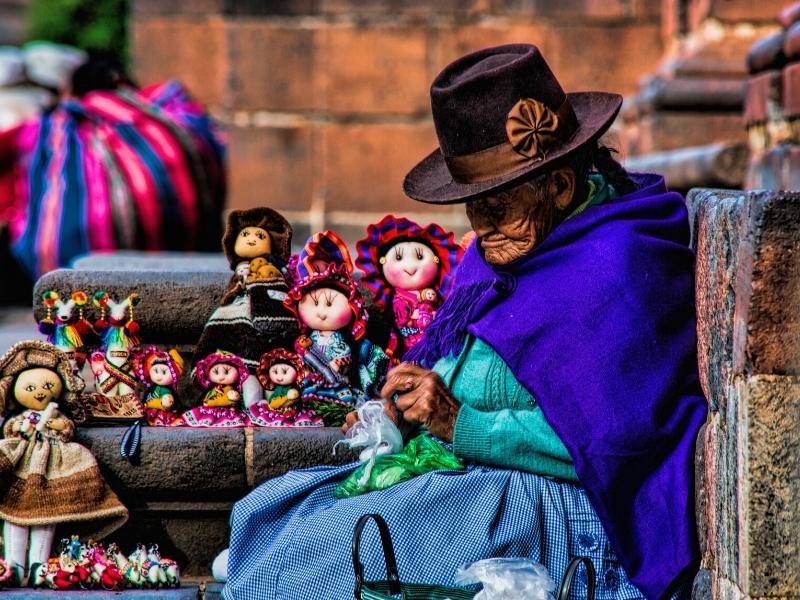
Peru is a multicultural country, and megadiverse, because it has different ecological floors, which have special microclimates, where ancient civilizations dominated the cold landscape of the Andes, and the hot coasts of the Pacific. It is also part of the great Amazon forest where a great variety of unique animals and plants coexist. This tour will take you to the most impressive landscapes in South America.


Peru is a country with different cultures and beautiful landscapes. It has one of the best gastronomy in the world. This tour is designed for travelers looking for unique and special moments in their vacations, and families who want to avoid crowds. You will visit the ancient city of Lima, the Amazon forest, the beautiful sacred valley of the Incas, the wonder of Machu Picchu.

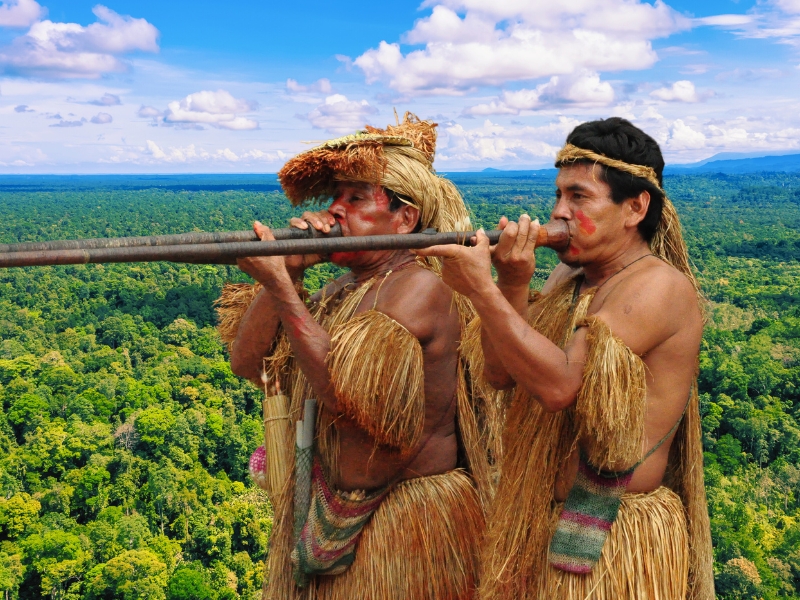
In the heart of the Peruvian Amazon, there is a natural paradise that will leave you breathless: Iquitos. With its impressive biodiversity, gastronomy, wildlife, lush jungle and a culture that is intertwined with nature.
